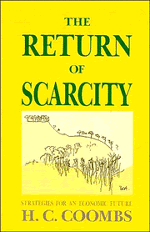Book contents
- Frontmatter
- Contents
- Introduction
- 1 Towards a Sustainable Society
- 2 Scarcity, Wealth and Income
- 3 Matching Ecological and Economic Realities
- 4 Science and Technology - For What Purpose?
- 5 Economic and Ecological Issues in Resource Management
- 6 Resource Management and Environmental Law
- 7 The Quality of life and Its Assessment
- 8 Is Democracy Alive and Well?
- 9 Technology, Economic Change and Political Strategy
- Bibliography
6 - Resource Management and Environmental Law
Published online by Cambridge University Press: 05 August 2012
- Frontmatter
- Contents
- Introduction
- 1 Towards a Sustainable Society
- 2 Scarcity, Wealth and Income
- 3 Matching Ecological and Economic Realities
- 4 Science and Technology - For What Purpose?
- 5 Economic and Ecological Issues in Resource Management
- 6 Resource Management and Environmental Law
- 7 The Quality of life and Its Assessment
- 8 Is Democracy Alive and Well?
- 9 Technology, Economic Change and Political Strategy
- Bibliography
Summary
Paper presented to the Environmental Law Association Symposium, University of Tasmania, Hobart, Tasmania, 1985.
WHAT are the prospects of our society, within the framework of our economic, political and legal institutions, achieving the target of sustainability which underlies the world and national conservation strategies?
In order to answer this question we must consider how successful our society has been in the past in achieving sustainability - especially in relation to the use of land and other natural resources. If, as I believe, our performance in this respect is one of tragic failure, what are the components in the attitudes and institutions of our society from which that failure derives? But, more importantly, are these reforms capable of achievement, which could bring that history of failure to an end and set our feet firmly on the path towards a sustainable society?
ABORIGINAL RESOURCE MANAGEMENT
When the first Europeans came to this continent they found, widespread, a characteristic landscape of grasslands among groves of trees - like that, observed Mrs Macarthur, of an English nobleman's park. This landscape provided a habitat for animals and plants of great diversity giving a rich repertoire of food and materials for the indigenous inhabitants. Although we have only now begun to realise it, this landscape was not ‘natural’. It was, rather, the artefact of Aboriginal land management over tens of thousands of years. The primary instrument of that management was fire - the controlled burning of the bushland on a systematic, chequerboard pattern, over a cycle of years.
- Type
- Chapter
- Information
- The Return of ScarcityStrategies for an Economic Future, pp. 97 - 106Publisher: Cambridge University PressPrint publication year: 1990



